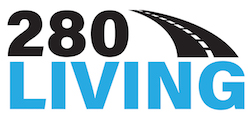
Hoover City Schools
The percentage of students in Hoover City Schools not performing at grade level in math and reading increased over the first semester of this school year, but not by much, school officials say.
Central office administrator Ron Dodson told the Hoover school board this week that hard work by teachers kept the backward academic slide that was anticipated this school year from being as bad as expected after months of virtual and hybrid instruction schedules.
When mid-year benchmark tests were given, 57% of students in Hoover City Schools were performing at grade level in math, and 61% of students were performing at grade level in reading, central office administrator Ron Dodson reported to the Hoover school board this week.
That compares to 58% of students at grade level in math and 62% at grade level in reading at the beginning of this school year, representing a 1 percentage point drop in both subjects over the course of the first semester in terms of where students should be.
At this time a year ago, 66% of students in Hoover City Schools were at grade level in math, and 62% were at grade level in reading, meaning a 9 percentage point drop in math from a year ago and a 1 percentage point drop in reading from a year ago. The percentage of students needing intervention in math increased from 19% to 20% since the start of this school, and the percentage of students needing intervention in reading increased from 16% to 19% since the beginning of the school year.
At the mid-year review last year, only 15% of students needed intervention in math, and 17% needed intervention in reading.
Also, at this year’s mid-year review, 54% of Hoover City Schools students were on target to meet their annual growth targets in math, and 55% were on target to meet growth targets in reading. That’s an 8 percentage point drop in math and a 4 percentage point drop in reading from a year ago.
VIRTUAL SCHOOL
Dodson said that, on average, about 30% of students in Hoover City Schools chose to learn completely from virtual instruction in the first semester. However, that percentage was higher among Black students; 45% of Black students chose virtual instruction, he said.
Of the students who chose in-person instruction, they actually only received 47 days of in-person instruction in the first semester, Dodson said. Because the school system implemented a staggered instruction schedule with two days of in-person instruction and three days of virtual instruction during part of the first semester, 35 of the days in the first semester were remote instruction, which means even the “in-person” students actually spent 43% of their school time remotely, he said.
Also, 3,818 students missed at least two weeks of school due to either testing positive for COVID-19 or having close contact with someone who tested positive, Dodson said. That’s 28% of the entire student population, he said.
Additionally, 578 employees missed at least two weeks of school for the same reasons, representing 30% of all employees, Dodson said.
School officials also compared academic progress for students who chose virtual instruction and those who chose in-person instruction. Fifty-eight percent of students who chose in-person instruction were performing at or above grade level in math, compared to 52% of those who chose virtual instruction.
In reading, virtual students actually were slightly ahead of in-person students, with 62% of virtual students and 61% of in-person students at or above grade level.
Dodson said he had expected the gap between virtual and in-person students in math to be bigger based on the anecdotal information he heard.
He also expected to see a greater academic slide overall.
“I was not prepared to see single-digit numbers in losses,” he said. “That is nothing but the talent, the work, the sweat and the blood of our teachers in this time.” It’s obvious that students do better when they are in school with their teachers each day, but “when we can’t do that, the staggered schedule is obviously a lot better than full remote,” Dodson said.
Math continues to be the area of greater concern when it comes to academic slides, he said.
“We know our students are going to need intervention services, both in the short and the long term,” he said. “We know there are funds coming. We don’t know about the rules and strings that are going to be with those funds yet, but we do know that funds are on the way to help.”
Some possible remedies to help students recover from losses include after-school tutoring, credit recovery and summer remediation, and there is even some talk of a longer school year, maybe for the next year or two, Dodson said.
When students are out for weeks at a time, that’s a lot of instruction lost, he said.
“It’s not just filling in potholes,” Dodson said. “We have roads to build and mountains to get through.”
Central office administrators are looking for additional ideas and calling on teachers to come forward with creative ideas.
“It’s time to think outside the box and think of what are some ways we can do things differently in the next two to three years to make a recovery from this loss and to get back on track to where we know our kids need to be,” Dodson said.
REFINANCING DEBT
In other business at Monday’s school board meeting, the board agreed to take advantage of lower interest rates and refinance some of its debt incurred in 2012.
The current debt for the warrants issued in 2012 is $33,228,400 a year, but by refinancing, that amount will drop to $32,352,875, saving $875,525, Chief Financial Officer Michele McCay said. That’s enough to pay eight teachers for a year, McCay said.
The refinancing also will not extend the debt out any longer. It still will be paid off by February 2025, McCay said.
